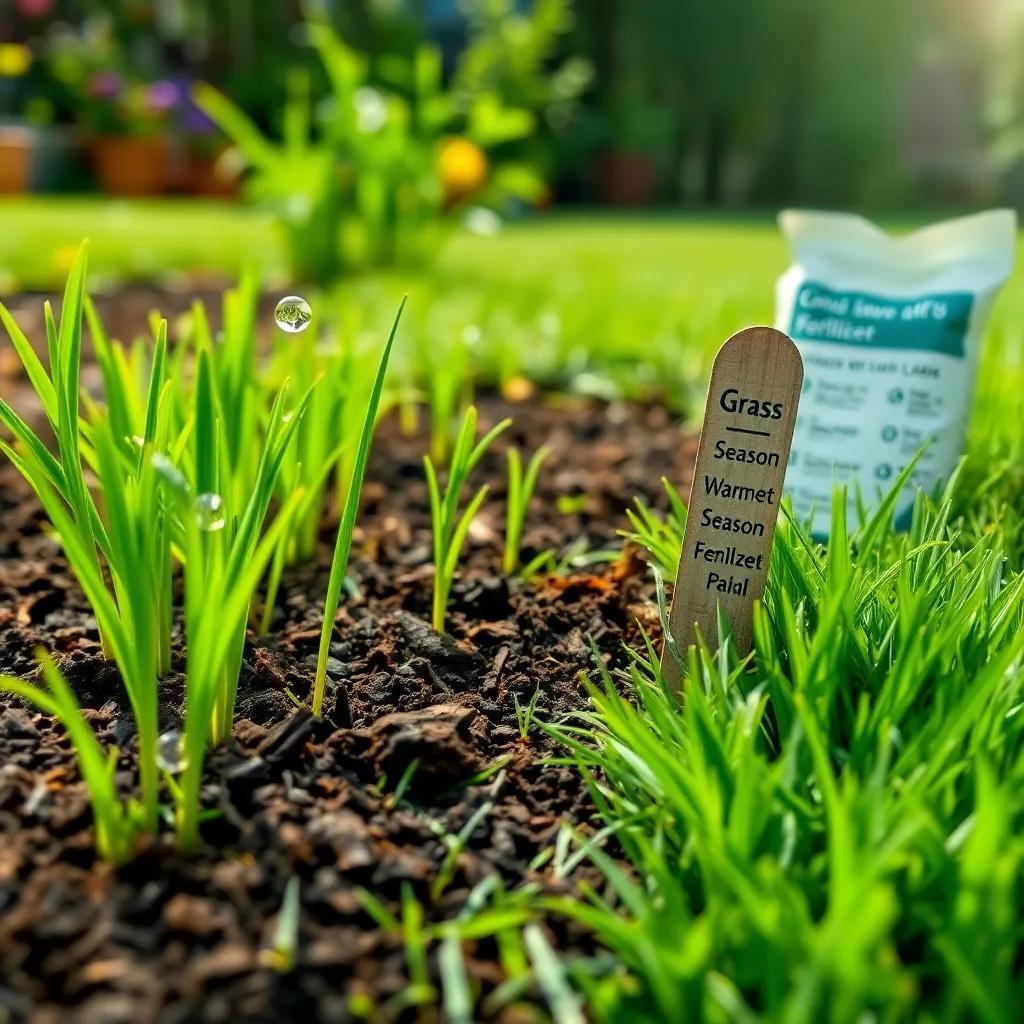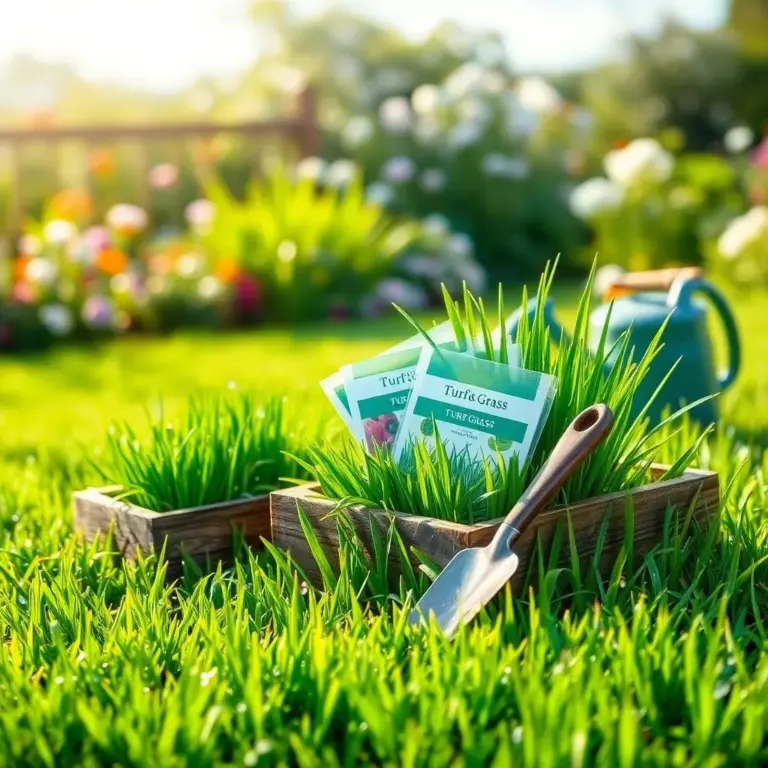If you’ve ever daydreamed about having a lush, green lawn that’s the envy of the neighborhood, you’re in the right spot! I’m thrilled to share my favorite tips and tricks for growing healthy turf grass, from germination to maintenance. So grab your gardening gloves, and let’s dig into the secrets of creating the perfect outdoor oasis!
Understanding Turf Grass Seed Germination Times
When I think about planting turf grass seeds, one of the most exciting parts is waiting for those little seeds to sprout! So, how long does it actually take? Typically, turf grass seeds take about 7 to 21 days to germinate. Isn’t that amazing? Of course, this timeline can change based on a few factors.
Here are some things that can affect germination times:
- Grass Type: Cool-season grasses, like Kentucky bluegrass and perennial ryegrass, usually germinate faster in cooler weather. Meanwhile, warm-season grasses, such as Bermuda grass and Zoysia grass, prefer warm soil. They might take a bit longer to sprout.
- Temperature: Soil temperature plays a big role! Seeds love warmth! The ideal soil temperature for germination is between 65°F and 75°F for cool-season grasses. Warm-season grasses, on the other hand, thrive in temperatures between 70°F and 85°F.
- Moisture Levels: Seeds need water to germinate! Keeping the soil consistently moist, but not soggy, will help those seeds sprout more quickly. I always sprinkle a little water every day just to check!
- Seed Quality: Using high-quality seeds can make a difference. Fresh, uncontaminated seeds have a better chance of germinating than older ones. So, make sure to buy from reputable sources!
Patience is key during this stage! While I wait for my seeds to germinate, I like to dream about my lush green lawn. Once those seedlings peek through, it’s the start of something beautiful!
Factors Affecting Turf Grass Growth Rates
Ah, turf grass growth! Once those little seeds have sprouted, it’s time to get excited about watching them grow! The growth rate of turf grass can vary quite a bit. Here are some key factors that will affect how quickly your grass gets to that perfect, lush look:
Factors to Consider:
- Grass Type: Just like people, different grasses have different personalities! Cool-season grasses grow best in the cooler months, especially in spring and fall. Warm-season grasses prefer hot summer days. Knowing your grass type can help you plan!
- Climate Conditions: I once learned the hard way that grass loves sunlight! The more sunlight and warmth your grass gets, the faster it’ll grow. Just like me, it needs its vitamins!
- Soil Health: Healthy soil equals happy grass! Make sure your soil is rich in nutrients, and if it feels compacted, a little aeration can help your grass grow faster. It’s almost like giving your grass a spa day!
- Watering Practices: Grass drinks like us! Deep, occasional watering encourages deep root growth. I always aim for watering in the early morning or late afternoon to avoid evaporation. Grass can get thirsty!
- Maintenance Practices: Regular mowing, fertilizing, and even pest control can boost growth rates. It’s like sending your grass to school! Mow it just right and watch it thrive!
So, if you monitor these factors, your turf grass will be growing strong and staying healthy. I can just imagine how beautiful my lawn will look! Isn’t it exciting?

Best Practices for Establishing Turf Grass
Getting your turf grass off to a great start is like preparing a delicious recipe. You need the right ingredients and care to make it perfect! Here are some best practices to follow when establishing your turf grass that can set you up for success:
1. Soil Preparation
– Clear the Area: Start by removing any existing weeds, rocks, or debris. A clean slate helps your grass thrive!
– Tilling the Soil: Loosen your soil using a garden fork or tiller. This makes it easier for those grass roots to grow deep and strong.
– Add Nutrients: Mix in compost or organic matter to enrich the soil. Think of it as giving your grass a nutritious meal!
2. Choosing the Right Seeds
– Pick seeds that suit your climate and sun exposure. Do you have shady areas? Consider shade-tolerant grass types. Sunny? Go for those heat-loving varieties!
3. Watering Wisely
– Initial Watering: Right after seeding, lightly water the area twice a day. This keeps the soil moist for those little seeds to sprout!
– Adjust as Needed: Once the grass starts to grow, shift to deeper watering sessions, about 1 inch per week. This helps roots dig deeper!
4. Mowing at the Right Time
– Hold off on mowing until your grass reaches 3 to 4 inches tall. Then, trim just the top third of the grass blade. This helps it spread and grow fuller.
With these practices in mind, you’re on your way to a stunning lawn that’ll impress all your neighbors! Just remember, patience and love go a long way in nurturing your turf grass.
Tips for Maintaining Healthy Turf Grass
Now that we have our beautiful turf grass established, it’s time to keep it healthy and happy! Regular maintenance is key, and here are some friendly tips I swear by:
1. Regular Mowing
– Keep your grass at the ideal height! I like to keep it around 2.5 to 3 inches. Mowing the top third encourages it to grow thick and lush. Plus, who doesn’t love a freshly cut lawn?
2. Water Deeply and Infrequently
– Instead of giving it a little sip every day, water deeply just a few times a week. This encourages roots to grow deep, reaching for that water. It’s like sending your grass to the gym for stronger roots!
3. Fertilization Schedule
– Use a balanced fertilizer to give your grass some extra love. I recommend applying it in early spring and fall. Making sure your grass gets the right nutrients can be the difference between a good lawn and a fantastic one!
4. Weed Control
– Keep an eye out for pesky weeds! Hand-pulling or using pre-emergent herbicides can help keep them at bay. A weed-free lawn is a happy lawn!
5. Pest Monitoring
– Regularly check for bugs! Grubs and other pests can wreak havoc on your grass. If you spot any, take action quickly! I like to use natural remedies first; they’re often less harmful.
With these maintenance tips, your turf grass will thrive beautifully. Keep a close watch, treat it with kindness, and enjoy your stunning, green outdoor space!
Common Issues That Slow Turf Grass Growth
Even with the best of intentions, sometimes our turf grass can face a few hiccups! Here are some common issues that can slow down its growth and how to tackle them:
1. Compacted Soil
– Compacting happens when heavy foot traffic crushes the soil. If your grass seems a bit sluggish, try aerating! This process opens up the soil, allowing air and nutrients to reach those roots. It’s like giving your lawn a nice stretch!
2. Inadequate Watering
– Too much or too little water can cause problems. Underwatering leads to dryness, while overwatering encourages fungus. Always check your soil moisture! It should feel slightly damp, not soggy.
3. Poor Drainage
– Standing water on your lawn indicates poor drainage. This can drown your grass! Consider creating drainage channels or adding soil amendments to improve water movement.
4. Lack of Sunlight
– If your grass is in the shade for too long, it may not grow as well. Trim overhanging branches or consider using shade-tolerant grass varieties for those tricky areas.
5. Pest Infestations
– Keep an eye out for signs of pests! Holes in the leaves or patches of dead grass could be a sign of a pest problem. Use integrated pest management techniques and act quickly!
By identifying and addressing these common issues, I can encourage my turf grass to flourish and reach its full potential! Remember, every lawn has its challenges, but with a little love and care, mine will thrive beautifully!

